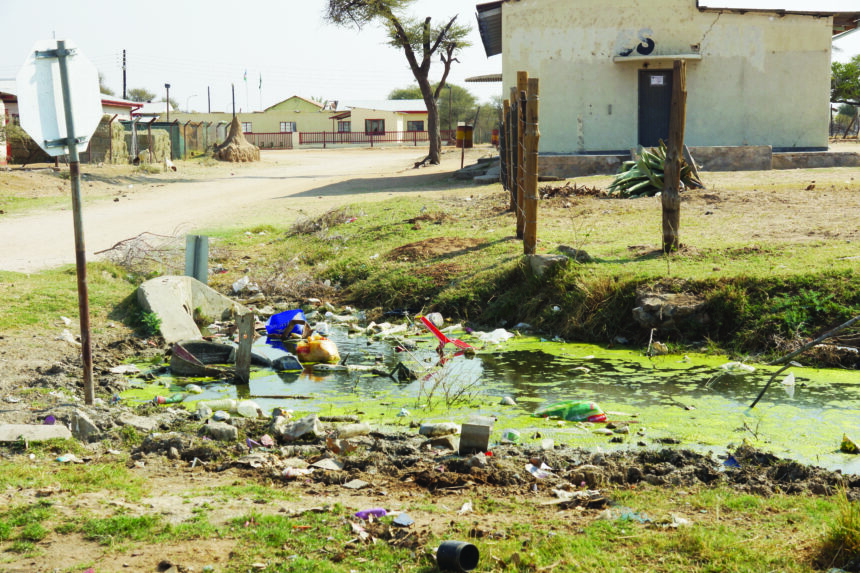OKAKARARA – Ageing sewage infrastructure and a growing population are some of the contributing factors to Okakarara’s continuing sewer problems, which have now become an eyesore to residents.
Planned and installed about 50 years ago, the town’s sewage system was initially designed to cater for 500 houses only.
However, with the growing population and the town’s ongoing expansion, the sewage system is currently forced to cater for over nearly 7 000 households.
Residents’ concerns
Residents who spoke to this publication primarily raised concerns about the health and safety of their children.
“It is really a risk to our children because we have noticed that they like playing with the dirty water, especially after school when on their way back home.
We really hope that this issue will be sorted out soon because it has been going on for a long time now. Just go to the area behind the secondary school fence and other locations. It’s just pools of dirty water at street corners,” complained Josephine Kotjipati.
Uhungira Tjazerua, a self-employed mechanic, echoed similar sentiments.
He said, although the town’s general tidiness is worth commending, he is worried about the growing number of congested and overflowing drains at various localities in the town.
“To be honest, I have no issue with the overall cleanliness of the town, particularly here in the business district. But it is also becoming clear that we have a serious sewage problem, and the number of overflowing drains has become too many. But we are hearing that the town council is busy fixing the problem, so let’s wait and see,” he said.
The Okakarara Town Council CEO, Ernst Katjiku, shared with New Era that the sewage problem in various locations remains a huge concern to the town’s leadership and residents.
He said plans are in place to address the issue.
“Our current pump station is small, and can no longer keep up with the growing pressure of catering for all these houses and the town’s expansion plans. And that is why you are seeing all that dirty water running in the streets. It is a huge concern for us, as a town council, and we are now in the process of expanding and upgrading our sewage network to ease the pressure, and also make room for more houses in the future. This is a problem that we, together with our development partners, will soon address,” he noted.
As a result of the ongoing sewage problems, about 60% of water remains unaccounted for at Okakarara due to the numerous congested and overflowing drains across various settlements.
“Not only is it a problem, but it also affects our water sources. As we speak, about 60% of our water remains unaccounted for because of this wastage, and I’m hoping that once the upgrading of our sewage system is completed, this problem will be a thing of the past. Some of these things are hard to control because urban migration here, at Okakarara, is happening at an unprecedented pace. But as a town council, we are alive to these realities, and tackle all issues as we move,” he remarked.
Meanwhile, under the rural sanitation programme of the urban and rural development ministry, Okakarara is earmarked to receive over 116 dry pit latrines.
The initiative is part of the government’s approach of constructing rural toilets under Community-Led Total Sanitation (CLTS) as adopted in the Harambee Prosperity Plan II under the Social Progression Pillar that amplifies the delivery of urban land, housing and sanitation.
-ohembapu@nepc.com.na
Caption:


